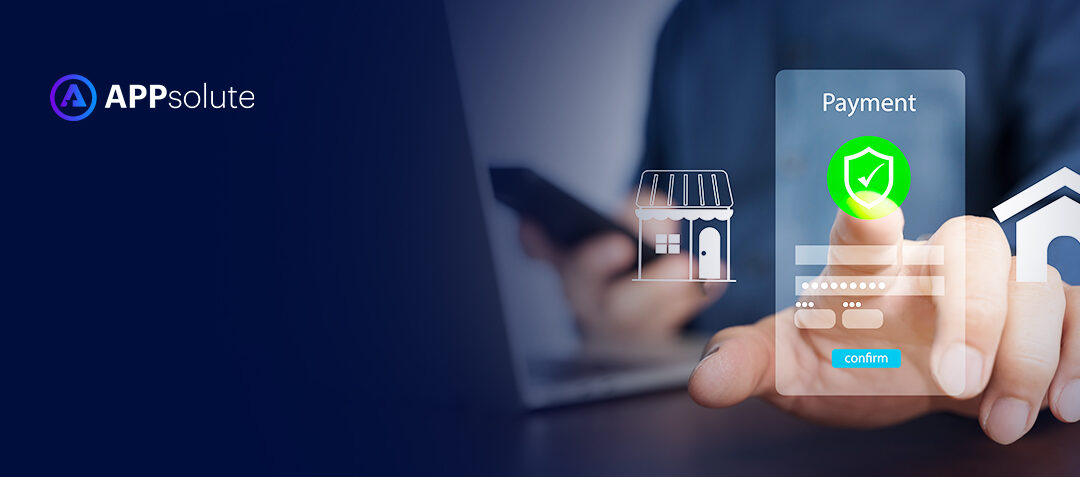Payment collection methods in the mortgage industry are experiencing rapid changes thanks to technological advances as well as evolving customer preferences. Get a quick snapshot of the key trends shaping the future of mortgage payments, including digital solutions, AI-powered fraud prevention, and emerging financial technologies. Mortgage lenders must keep themselves abreast of these changes in order to stay competitive, enhance customer experience, while ensuring regulatory compliance.
A dynamic landscape
Mortgage lenders today face a rapidly evolving payment landscape driven by a flurry of technological advancements and customer demand for convenience, security, and flexibility. Think about it. How many of your borrowers have been writing checks, mailing them, or maybe even stopping by the bank to make mortgage payments, recently? I am sure, not many. It’s a thing of the past.
Customers are shifting their payment preferences rapidly. Digital payment options have begun to dominate the landscape. To thrive, mortgage lenders need to keep up with speed, flexibility, and security as the baseline to deliver better customer service and to ensure regulatory compliance.
The future of mortgage payment collection will be all about blending new technology with a customer-first approach. So, what are the trends that are likely to change the course for lenders? Let’s look at some of them.
The shift to digital payments for convenience and security
Traditionally, the mortgage industry has relied on cash, checks, and bank transfers to collect payments, but these methods are now giving way to more advanced, new-age solutions. Traditional paper checks and wire transfers are being replaced by faster, more efficient, and secure digital payment methods. In fact, the decline of cash continues to accelerate globally. In 2025, the entire payment ecosystem is expected to be dominated by digital options, with the mortgage industry being no exception.
Digital payments have already made a head start, with options like Automated Clearing House (ACH) payments, online payment portals, and mobile payment solutions emerging as easier alternatives. These modern methods streamline the payment process, reducing administrative burden and enabling homeowners to make payments quickly and securely from the comfort of their homes.
Benefits of digital payments
- Reduced processing times: Digital payments can be processed almost instantly, improving cash flow for lenders.
- Lower operational costs: Automated digital systems reduce the need for manual processing, cutting down on labor costs.
- Improved accuracy: Digital systems minimize human error in payment processing.
- Enhanced customer satisfaction: Borrowers appreciate the convenience and speed of digital payment options.
One of the key innovations driving this shift is composable architecture. It is a modular approach that allows businesses to integrate multiple payment methods across platforms seamlessly, enabling lenders to offer various payment options, like mobile wallets, bank transfers, and ACH payments, all through a unified system. This flexibility helps mortgage providers meet customer preferences while maintaining efficient backend operations.
API-driven solutions, such as APPsolute, enable mortgage companies to integrate digital payment solutions into their existing platforms without overhauling their entire infrastructure. With APIs, lenders can add new payment methods as needed and update payment functionalities without disrupting operations.
Embedded payments are also becoming popular for mortgage payment collections. These solutions embed payment functionality directly into customer-facing platforms, such as mobile apps and borrower portals, creating a seamless and frictionless experience for consumers. For mortgage servicers, this means allowing customers to make payments without navigating multiple systems or platforms, which increases convenience and reduces the likelihood of missed payments.
AI and fraud prevention
As digital payments become the norm, fraud prevention will be a top priority for the mortgage industry. Mortgage transactions often involve large sums of money and sensitive financial data, making them a prime target for fraudsters, and increasing the risk of financial loss and reputational damage for lenders. As merchant losses from online payment fraud are projected to exceed $362 billion globally between 2023 to 2028[1], businesses have no option but to turn to advanced solutions to protect their customers and themselves.
AI-powered fraud prevention can become an essential tool for mortgage lenders to address this challenge. By leveraging machine learning and behavioral analytics, AI systems can monitor and analyze vast amounts of transaction data in real time, identifying unusual patterns that may indicate fraudulent activity. For instance, machine learning models can evaluate customer behavior and flag transactions that deviate from typical patterns, such as large, unusual payments or multiple failed payment attempts. This proactive approach ensures that fraud is detected before it causes significant damage.
AI in risk assessment and credit scoring
Beyond fraud prevention, AI can significantly enhance risk assessment and credit scoring processes:
- Improved accuracy: AI algorithms can analyze a broader range of data points, leading to more accurate risk assessments.
- Real-time updates: AI systems can continuously update risk profiles based on the latest data, allowing for more dynamic risk management.
- Alternative data analysis: AI can incorporate non-traditional data sources, potentially expanding access to mortgages for underserved populations.
With rising regulatory requirements and heightened sensitivity around data security, it’s essential for mortgage lenders to invest in fraud prevention technologies that comply with industry standards, such as the Payment Card Industry Data Security Standard (PCI DSS). Solutions like APPsolute, which offer PCI-compliant architecture, can help mortgage servicers meet these compliance standards while safeguarding sensitive customer information.
The advent of Central Bank Digital Currencies (CBDCs)
Central Bank Digital Currencies (CBDCs) are a relatively new but rapidly emerging innovation in the financial world. Several countries around the globe are exploring or piloting them. In the coming days, CBDCs are expected to play a significant role in altering payment systems, particularly for cross-border transactions.
For mortgage lenders, this implies that future payment systems could involve the use of government-backed digital currencies. CBDCs have the potential to make cross-border payments faster, cheaper, and more secure. For the mortgage industry, the ability to process payments in real time, without the delays and fees associated with traditional bank transfers or wire services, could significantly improve the customer experience, particularly for borrowers living abroad. Additionally, CBDCs will offer enhanced transparency and security, reducing the risk of fraud and ensuring that all transactions are traceable and accountable.
Potential impact of CBDCs on mortgage lending
Interest rate mechanisms: CBDCs could potentially allow for more direct implementation of monetary policy, affecting how mortgage interest rates are set and adjusted.
Loan origination: CBDCs might streamline the loan origination process by providing instant verification of funds and faster settlement.
International mortgages: CBDCs could simplify the process of obtaining mortgages for properties in different countries, potentially opening new markets for lenders.
However, the adoption of CBDCs also comes with operational challenges. Mortgage lenders will need to prepare for the changes that CBDCs will bring, including integrating these new currencies into existing payment systems. This may require significant investment in new technology, changes in regulatory compliance processes, and the development of partnerships with central banks and financial institutions.
BigTech, Digital wallets, and cryptocurrency on the rise
The rise of BigTech companies such as Apple, Google, and Amazon has not only transformed the consumer tech industry but is also changing the payments landscape. These companies are increasingly driving innovation and setting new standards for payment systems.
The growing adoption of digital wallets is transforming how consumers make payments across industries, and the mortgage sector is no exception. By 2026, the digital wallet market is expected to exceed $12 trillion globally[2]. For mortgage lenders, the ability to leverage these platforms would be an essential step in making the payment process faster and more convenient.
Impact on customer expectations and competitive landscape
- Seamless user experience: BigTech companies have set high standards for user interfaces, raising borrower expectations for mortgage payment platforms.
- Data-driven insights: Lenders may need to leverage big data analytics to compete with tech giants entering the financial services space.
- Ecosystem integration: Mortgage payments might become part of larger financial ecosystems, requiring lenders to form strategic partnerships.
Additionally, cryptocurrencies are moving from being speculative investments to becoming viable payment options. Companies like PayPal, Mastercard, and Square have already integrated cryptocurrency payments, and the trend is expected to continue. While cryptocurrencies are not yet widely used in mortgage payments, lenders should start considering how they can integrate cryptocurrency options to future-proof their payment collection systems and cater better to the millennial and Gen Z demographic.
The growth of Buy Now, Pay Later (BNPL)
The Buy Now, Pay Later (BNPL) trend, which has gained massive popularity in the retail sector, also seems to be making a headway into the mortgage industry. BNPL services allow consumers to break down their payments into smaller, more manageable installments, often with little to no interest. In the mortgage industry, this concept could be adapted to offer more flexible payment plans, especially for first-time homebuyers or those facing financial challenges.
Potential use cases for BNPL in mortgages
- Property taxes: Offering BNPL options for annual property tax payments could help homeowners manage large lump-sum expenses.
- Insurance payments: BNPL could be applied to homeowners’ insurance premiums, making it easier for borrowers to maintain coverage.
- Home improvements: Lenders could offer BNPL options for home improvement loans, helping borrowers increase property value while managing costs.
However, as BNPL services become more prevalent, mortgage lenders must remain compliant with evolving regulations and ensure they are transparent with consumers about the terms and conditions of BNPL agreements.
APPsolute: The solution for mortgage payment collection
With the rapidly evolving mortgage payment collection landscape, lenders need a robust, flexible solution that can keep pace with technological advancements. APPsolute offers a comprehensive, API-enabled, PCI-compliant payment solution designed to meet the growing demands of the modern mortgage industry.
APPsolute allows mortgage lenders to adapt quickly to emerging payment trends, without the need for expensive system overhauls. And with built-in AI-powered fraud prevention, APPsolute ensures that every transaction is secure, offering both lenders and borrowers peace of mind.
Key benefits of APPsolute for mortgage lenders
- Comprehensive digital payment integration: Seamlessly incorporate various payment methods, including mobile wallets and ACH transfers.
- Enhanced security: AI-powered fraud prevention and PCI-compliant architecture protect sensitive financial data.
- Future-proof flexibility: Modular design allows easy integration of new payment technologies as they emerge.
- Improved customer experience: Offer a unified, user-friendly payment interface that meets modern borrower expectations.
- Cost-effective solution: Reduce operational costs associated with traditional payment methods and minimize infrastructure upgrade expenses.
As the mortgage payment landscape continues to evolve, the time to invest in the right solutions is now. By adopting forward-thinking solutions like APPsolute, mortgage lenders can position themselves to thrive in a competitive, tech-driven future.
Write to us at business@appsolute.ai to schedule a demo of APPsolute today.
[1] https://www.juniperresearch.com/press/losses-online-payment-fraud-exceed-362-billion/
[2] https://www.juniperresearch.com/press/digital-wallets-transaction-value-to-grow-by-60/
Connect with APPsolute
For business-related queries, please fill in the form. For borrower-related queries, contact us at (877) 997-8682 or drop an email at afssupport@appsolute.ai.





